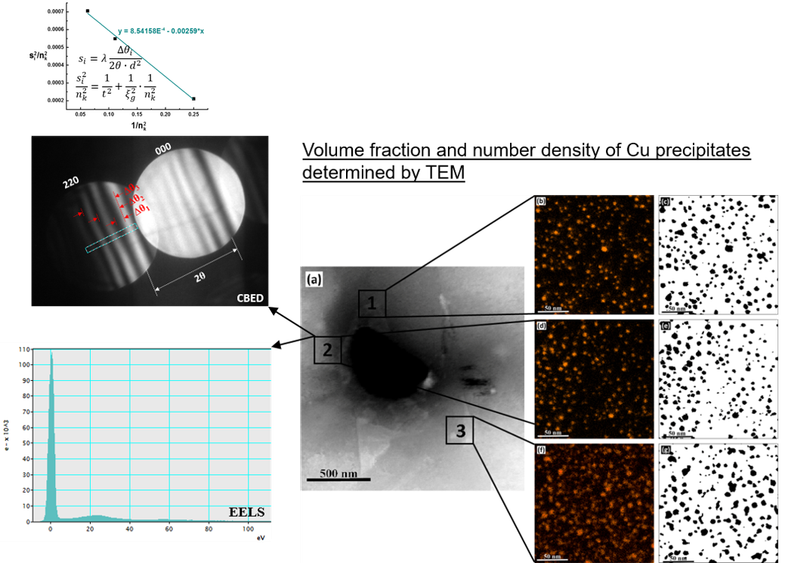TEM on Precipitation
Transmission Electron Microscopy (TEM) is a versatile and powerful technique for characterizing precipitation in metallic materials.
Historically, TEM has played a pivotal role in advancing our understanding of precipitation phenomena and precipitation hardening. Over the past decades, it has also contributed significantly to the optimization of material performance through precipitation engineering. With the integration of modern aberration-corrected technologies, TEM has become an indispensable tool for precipitation-related research, offering comprehensive capabilities that span morphological (imaging), chemical (spectroscopy), structural (diffraction), three-dimensional (tomography), and environmental (in situ) analyses, reaching resolutions down to the Ångström scale.
In our recent review paper (tao-zhou-et-al-2022.pdf), we summarize how advancements in TEM-based techniques, sample preparation methodologies, and data analysis algorithms have substantially enhanced the capabilities of (S)TEM for quantitative characterization of precipitation in metals. These developments continue to expand the frontiers of nanoscale materials research and enable more precise engineering of precipitation processes for improved mechanical performance.

Figure 1. A schematic illustrating the plethora of TEM capabilities for analyzing precipitate characteristics, of importance for various properties of metallic materials.
Due to the inherent projection nature of (S)TEM imaging, accurately quantifying the volume fraction and number density of embedded precipitates within a metallic matrix remains a significant challenge. In this work (tao-zhou-et-al-2018.pdf), we demonstrate how combining thin-foil sample thickness measurements (obtained via EELS or CBED) with EDS mapping enables quantitative analysis of the volume fraction and number density of nanoscale precipitates. This integrated approach enhances the reliability of precipitation characterization.

Figure 2. Integrating EELS/CBED and STEM-EDS mapping for the quantification of volume fraction and number density of embedded precipitates.